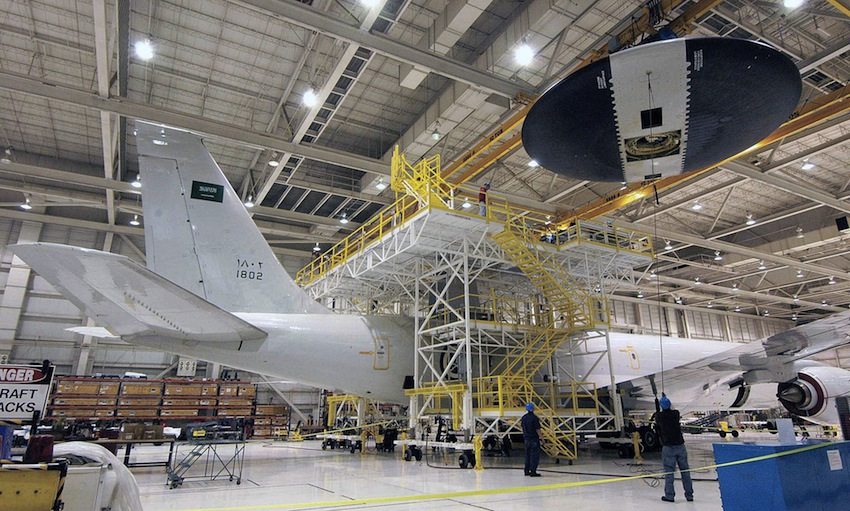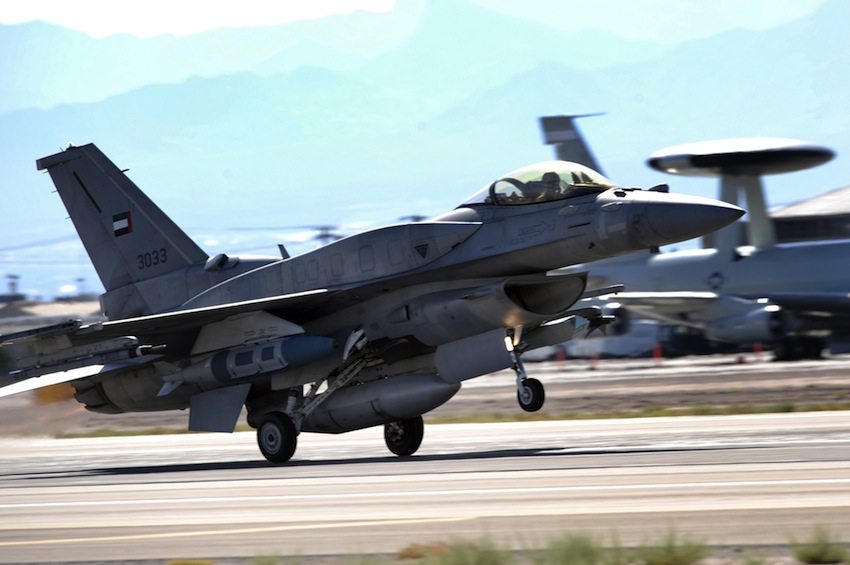To help the Saudi Arabian-led coalition attack Houthi militias in Yemen, the Pentagon is sharing intelligence information and helping Riyadh get ammunition and supplies into position.
On March 28, American warships and helicopters also pulled two Saudi pilots out of the Gulf of Aden after they ejected from their stricken fighter bomber.
“I cannot get into operational specifics,” a Pentagon spokesman told War Is Boring in an email. “However, our support is limited and not in a direct combat role.”
But even if the Pentagon really is hanging back, American-made warplanes and other military hardware are leading the fight against the ascendant Houthis. The Saudi-led air strikes, dubbed Operation Decisive Storm, is possible in no small part because of years of military aid from Washington.
“The United States coordinates closely with Saudi Arabia and our GCC partners on issues related to their security and our shared interests,” National Security Council spokesperson Bernadette Meehan said after the aerial campaign began, referring to the regional Gulf Cooperation Council political and economic bloc.
“While U.S. forces are not taking direct military action in Yemen … we are establishing a Joint Planning Cell with Saudi Arabia to coordinate U.S. military and intelligence support,” Meehan added.
But what Meehan didn’t note is that U.S.-supplied F-15s and F-16s are probably dropping many of the bombs over Sana’a and other Yemeni cities.
To a casual observer, the Arab air armada — with aircraft from Saudi Arabia, Bahrain, Jordan, Kuwait, Morocco, Qatar, Sudan and the United Arab Emirates—doesn’t look much different from a U.S. Air Force strike team.
The agreement—one of the largest single American arms sales ever—included dozens of advanced F-15SA fighter bombers. The Boeing jets are similar to the U.S. Air Force’s F-15E Strike Eagle, which the Pentagon still relies on heavily today.
An improvement over earlier S models acquired in the 1990s, the Saudi SA variants can lob precision laser- and GPS-guided bombs just like their American counterparts. Riyadh also bought AGM-84H Stand-Off Land Attack-Extended Range missiles—a derivative of the Harpoon anti-ship weapon, a.k.a., SLAM-ER—so their Eagles could hit targets up to 150 miles away.
Hundreds of cluster and unguided “dumb” bombs were in the arms packages, too. And the Pentagon is now helping the Saudis configure the jets to carry the latest AGM-154C Joint Stand-Off Weapon glide bomb.
The U.S. Air Force expected to provide space for the Saudis to train at Mountain Home Air Force Base in Idaho. With Washington’s help, Riyadh eventually established its own training facilities.
“Saudi Arabia is a valuable long-term U.S. partner in the Gulf,” Heidi Grant, the Air Force’s deputy under secretary for International Affairs, said in 2010. “Facilitating the modernization of Royal Saudi Air Force aircraft, as well as providing enhanced aircrew and maintenance training, would build partner capacity and contribute to stability in the region.”
In 2014, the Pentagon hired Boeing to help design the upcoming King Saud Air Base — the new premier facility for the country’s flying branch. But Saudi pilots and ground crews still regularly travel to the U.S. for training exercises.
Riyadh is also no doubt using its arsenal of European Typhoon and Tornado fighter bombers to hit at the Shi’ite insurgency.
But Riyadh’s aerial power is not just comprised of modern, fast-moving jets. The Royal Saudi Air Force has airborne command centers, tankers and long-range spy planes similar to their U.S. counterparts.
The RSAF is the only air arm outside of NATO to fly the massive E-3A Sentinel airborne warning and control system, better known as AWACS. With its powerful radars, this airliner-sized plane can spot enemy aircraft, coordinate strikes and even find enemy vehicles on the ground.
Boeing sold the kingdom several tankers based on the same basic airframe. However, the Saudis are replacing those large flying gas stations with a variant of the European Airbus A330s called the Multi-Role Tanker Transport.
The Saudis operate a number of unique RE-3 spy planes. These four-engined jets, also known as the Tactical Airborne Surveillance System, can listen in on enemy radio chatter just like the American RC-135V/W Rivet Joints.
Riyadh isn’t the only member of the Arab coalition to rely heavily on American warplanes. Authorities in Manama, Amman, Rabat and Abu Dhabi likely dispatched American-made F-16 fighters on missions over the Arabian Peninsula.
As with the Saudi Strike Eagles, the Washington’s other Arab friends bought stockpiles of smart bombs — and the required targeting gear — to go along with their F-16s.
The UAE has been the only customer for Lockheed’s advanced F-16E Desert Falcon. This version has a more powerful engine, large fuel tanks on its upper fuselage for extra range, improved radar and defensive gear — and it can fire SLAM missile.
While Kuwait doesn’t fly F-16s, the country’s air arm operates another American jet — the F/A-18 Hornet.
This means the Arab states can work well together … because they mostly use American-made hardware. The Saudi tankers should be able to gas up all of these allied F-16s and F/A-18s, if necessary. The Emirates could have sent its equally versatile Airbus aerial refuelers, as well.
Doha has a fleet of French Mirage 2000 jets, while Khartoum — hardly an ally of Washington — generally buys warplanes from Russia, China and Belarus.
Even with these two outliers, the aerial armada still has a distinct American flavor — without Washington’s direct participation.
In recent years, Arab air forces have shown an increasing willingness to attack targets across the Middle East and North Africa.
A number of the countries bombing Yemen have struck militants in Libya, Iraq and Syria. Riyadh’s jets already bombed the Houthi militias once before with at least the tacit support of then Pres. Ali Abdullah Saleh in 2009.
In other words, if you have the ability to wage war, then you’re more likely to do it. But according to the Pentagon, the Saudis and their allies aren’t necessarily more likely to launch interventions because of their American-supplied arsenals.
“The proposed sale will not alter the basic military balance in the region,” the Defense Security Cooperation Agency, the Pentagon’s weapons broker, always says when it announces upcoming sales.
But billions of dollars worth of hardware — supplied over many years — does shift the balance. In any case, the Pentagon can pretty easily sit this fight out, because in many ways it’s already in the thick of it.
We Recommend:





